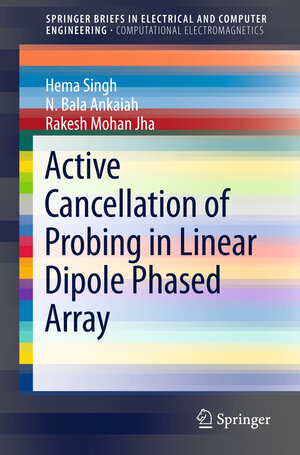
Active Cancellation of Probing in Linear Dipole Phased Array
von Hema Singh, N. Bala Ankaiah und Rakesh Mohan JhaIn this book, a modified improved LMS algorithm is employed for weight adaptation of dipole array for the generation of beam pattern in multiple signal environments. In phased arrays, the generation of adapted pattern according to the signal scenario requires an efficient adaptive algorithm. The antenna array is expected to maintain sufficient gain towards each of the desired source while at the same time suppress the probing sources. This cancels the signal transmission towards each of the hostile probing sources leading to active cancellation. In the book, the performance of dipole phased array is demonstrated in terms of fast convergence, output noise power and output signal-to-interference-and noise ratio. The mutual coupling effect and role of edge elements are taken into account. It is established that dipole array along with an efficient algorithm is able to maintain multilobe beamforming with accurate and deep nulls towards each probing source. This work has application to the active radar cross section (RCS) reduction. This book consists of formulation, algorithm description and result discussion on active cancellation of hostile probing sources in phased antenna array. It includes numerous illustrations demonstrating the theme of the book for different signal environments and array configurations. The concepts in this book are discussed in an easy-to-understand manner, making it suitable even for the beginners in the field of phased arrays and adaptive array processing.



